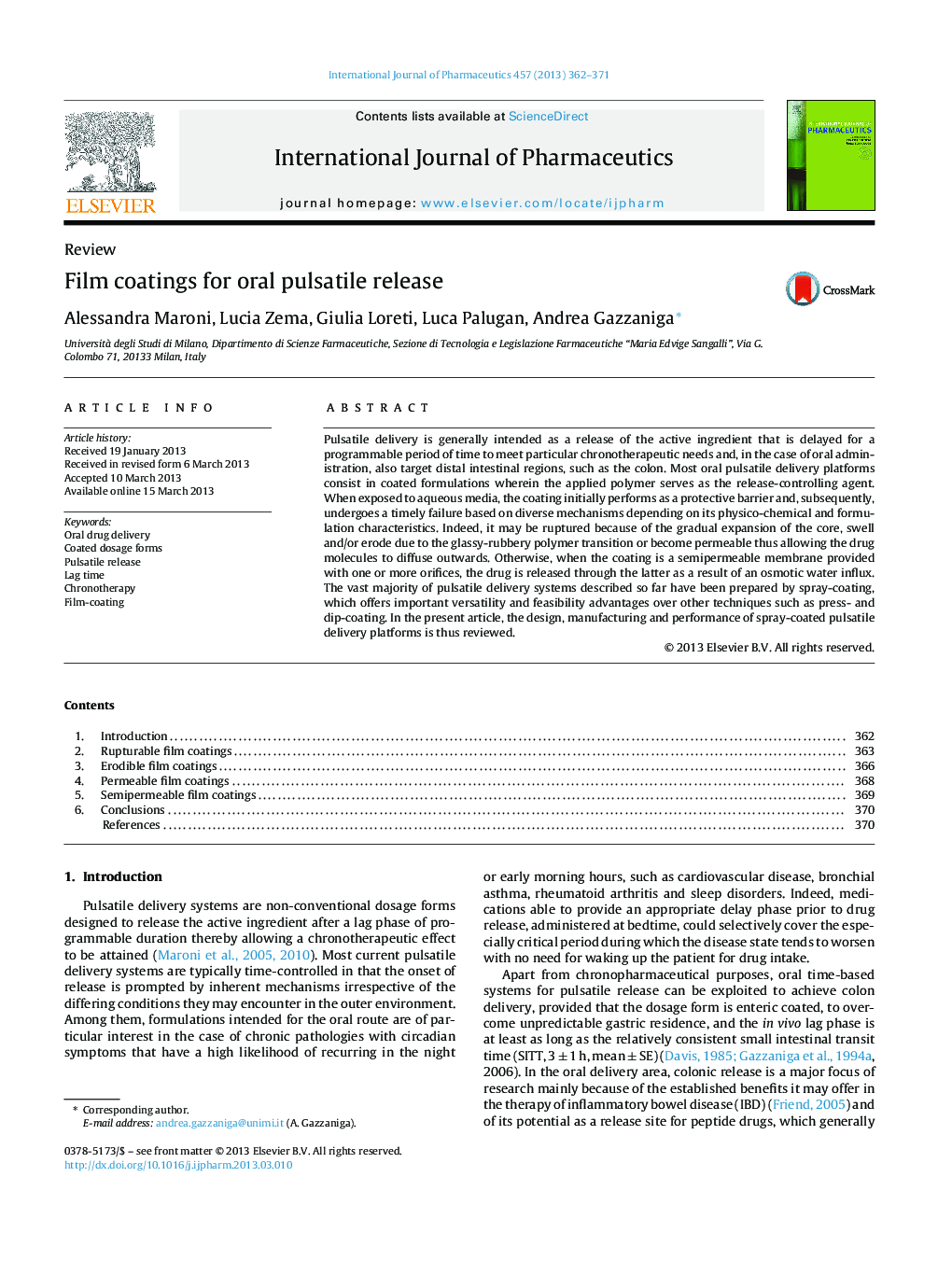| Article ID | Journal | Published Year | Pages | File Type |
|---|---|---|---|---|
| 2502223 | International Journal of Pharmaceutics | 2013 | 10 Pages |
Pulsatile delivery is generally intended as a release of the active ingredient that is delayed for a programmable period of time to meet particular chronotherapeutic needs and, in the case of oral administration, also target distal intestinal regions, such as the colon. Most oral pulsatile delivery platforms consist in coated formulations wherein the applied polymer serves as the release-controlling agent. When exposed to aqueous media, the coating initially performs as a protective barrier and, subsequently, undergoes a timely failure based on diverse mechanisms depending on its physico-chemical and formulation characteristics. Indeed, it may be ruptured because of the gradual expansion of the core, swell and/or erode due to the glassy-rubbery polymer transition or become permeable thus allowing the drug molecules to diffuse outwards. Otherwise, when the coating is a semipermeable membrane provided with one or more orifices, the drug is released through the latter as a result of an osmotic water influx. The vast majority of pulsatile delivery systems described so far have been prepared by spray-coating, which offers important versatility and feasibility advantages over other techniques such as press- and dip-coating. In the present article, the design, manufacturing and performance of spray-coated pulsatile delivery platforms is thus reviewed.
Graphical abstractFigure optionsDownload full-size imageDownload high-quality image (129 K)Download as PowerPoint slide
